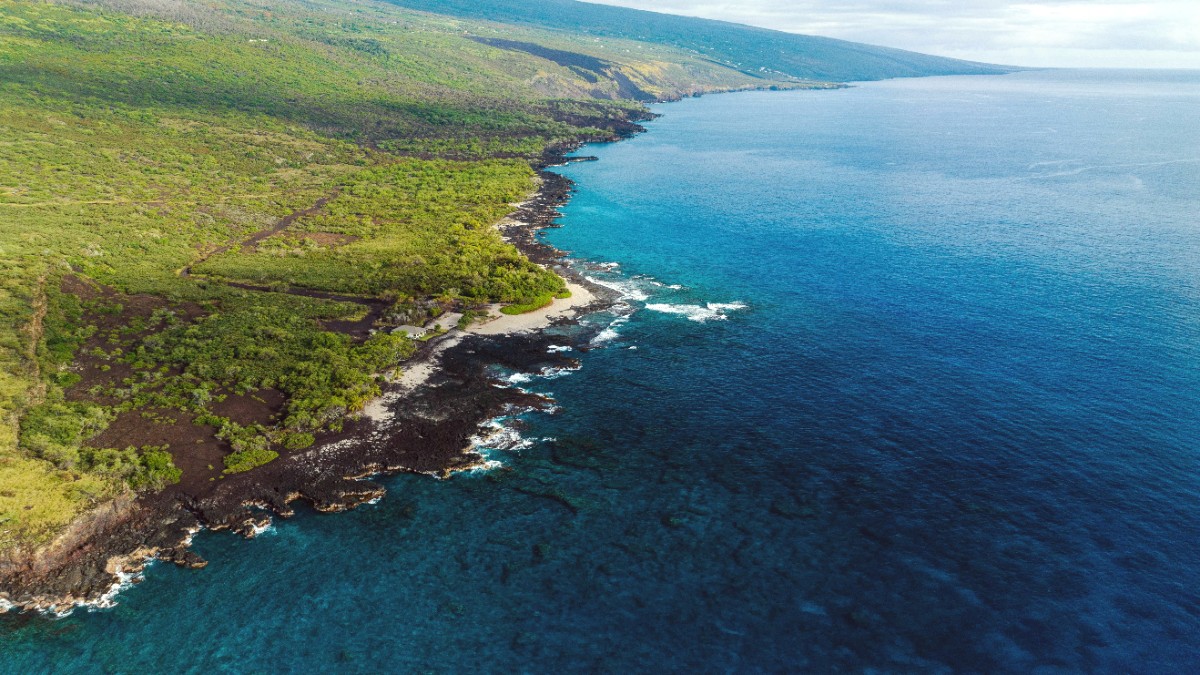
Hawaii, USA
This destination captivates with natural beauty, rich history, and the warmth of Aloha. Whether you seek adventure, relaxation, or cultural discovery, the Big Island provides a memorable visit unlike any other.
Hawaiʻi Island is the largest landmass in the Hawaiian archipelago, spanning 4,028 square miles. This size makes it larger than all the other Hawaiian Islands combined, presenting vast and varied landscapes. Located in the Central Pacific Ocean, approximately at 19.5° N latitude and 155° W longitude, the island's geological foundation rests upon five shield volcanoes, each contributing distinct features to the terrain.
Kohala, the oldest, is extinct. Mauna Kea stands dormant, reaching 13,803 feet (4,207 meters) above sea level, Hawaii's highest point and a premier site for astronomical observation. Hualālai remains active, with its last eruption in the early 19th century, influencing the Kona coffee belt. Mauna Loa, one of the world's largest volcanoes, is active, its broad slopes dominating the southern part of the island. Kīlauea is the most active, continuously reshaping the landscape with its eruptions, especially within Halemaʻumaʻu crater. This constant geological activity makes the island dynamic and ever-changing.
Hawaiʻi Island is a profound place in Polynesian history and the story of the Hawaiian Kingdom. It stands among the first Hawaiian islands settled by Polynesian voyagers, who likely arrived from the Marquesas Islands between 400 and 800 AD. These early navigators brought their culture, plants, and animals, establishing complex societal structures and sophisticated agricultural practices that sustained life on the volcanic slopes. Their deep understanding of the land and sea laid the groundwork for future generations.
A pivotal moment in Hawaiian history came with Captain James Cook's arrival in Kealakekua Bay in 1779. This marked the first sustained contact between Native Hawaiians and Europeans. Interactions became strained, leading to Cook's death in the bay later that year. This event is a significant turning point, opening the islands to greater foreign influence and trade, profoundly shaping their future.
400-800 AD: Early voyagers settle the island.
1779: First European contact in Kealakekua Bay.
Late 18th century: Near Kohala, future unifier of Hawaii.
By 1810: Kamehameha I unites the islands.
19th-20th centuries: Sugar industry shapes multicultural identity.
Volcanic activity, specifically from Kīlauea, consistently shapes the island's landscape, culture, and history. The constant flow of lava creates new land, demolishes old, and offers a powerful reminder of nature's creative and destructive forces. This geological dynamism fosters a deep connection to the land (ʻāina) and a reverence for Pele, the Hawaiian goddess of volcanoes and fire, whose presence can be felt across the island. The stories and traditions surrounding the volcanoes form an integral part of Hawaiian heritage.
In more recent history, Mauna Kea's summit gained recognition as a premier site for astronomical observation. Its high elevation, low humidity, and minimal light pollution create ideal conditions for viewing the cosmos. Since the 1960s, world-class observatories have been constructed on its slopes, making the Big Island a global hub for scientific discovery. This location brings together ancient Hawaiian knowledge of celestial navigation with modern scientific inquiry, adding another layer to the island's profound historical significance.
Kamehameha I, a strategic warrior and diplomat born near Kohala, unified the Hawaiian Islands into a single kingdom by 1810. His efforts ended centuries of warring chiefdoms and established the Kingdom of Hawaii, a sovereign nation recognized by global powers. His legacy is deeply embedded in the island's identity, representing strength, leadership, and the enduring spirit of the Hawaiian people.
Hawaiʻi Island is home to an estimated population of approximately 200,629 people as of July 2023. This population spreads across diverse communities, creating an unique blend of urban centers and rural tranquility. The island's largest population center and county seat is Hilo, located on the lush eastern side. Hilo offers a traditional Hawaiian town experience with a charming downtown, historic architecture, and a strong local community. On the western side, Kailua-Kona serves as the main tourism hub, known for its sunny weather, bustling Alii Drive, and access to ocean activities.
The island's main industries mirror its natural abundance and welcoming environment. Tourism is a main economic driver, drawing visitors with unique landscapes, cultural experiences, and outdoor adventures. Cattle ranching, a legacy of the paniolo (Hawaiian cowboy) tradition, continues to thrive in areas like Waimea. Beyond these, astronomy is a significant industry, with world-class observatories on Mauna Kea attracting researchers and contributing to scientific advancement.
Hawaiʻi Volcanoes National Park, Mauna Kea summit, Waipiʻo Valley, and Punaluʻu Black Sand Beach offer diverse and breathtaking sights.
Approximately 200,629 residents, with industries in tourism, cattle ranching, and astronomy. Hilo and Kailua-Kona are major centers.
Experience hula, ancient heiau, petroglyph fields, the aloha spirit, and a diverse ethnic cuisine.
The island's climate diversity is truly a wonder. It hosts a wide range of microclimates, allowing you to transition from tropical rainforests with abundant rainfall to arid deserts and even alpine tundra, all within a few hours' drive.